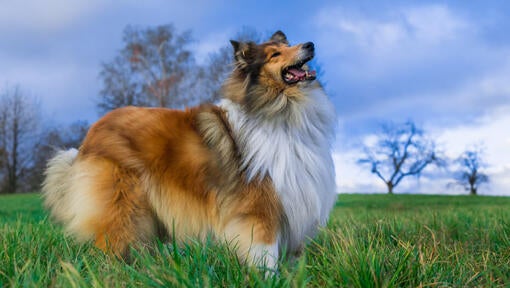History and Origins
Country of Origin: Scotland
The early ancestors of the Rough Collie are thought to have arrived with the Romans, around 2000 years ago. Originally shorter in both leg and nose, the Rough Collie is thought to have had some influence from the Borzoi, known for its elongated, chiselled head, though exactly when this occurred is unclear.
Queen Victoria was instrumental in popularizing the Collie, however it was the Smooth variant she kept herself. Later, Queen Alexandra kept Rough Collies, and it is likely she who is responsible for the popularity of the breed in the show ring and the development of the more glamorous appearance of the breed today.










